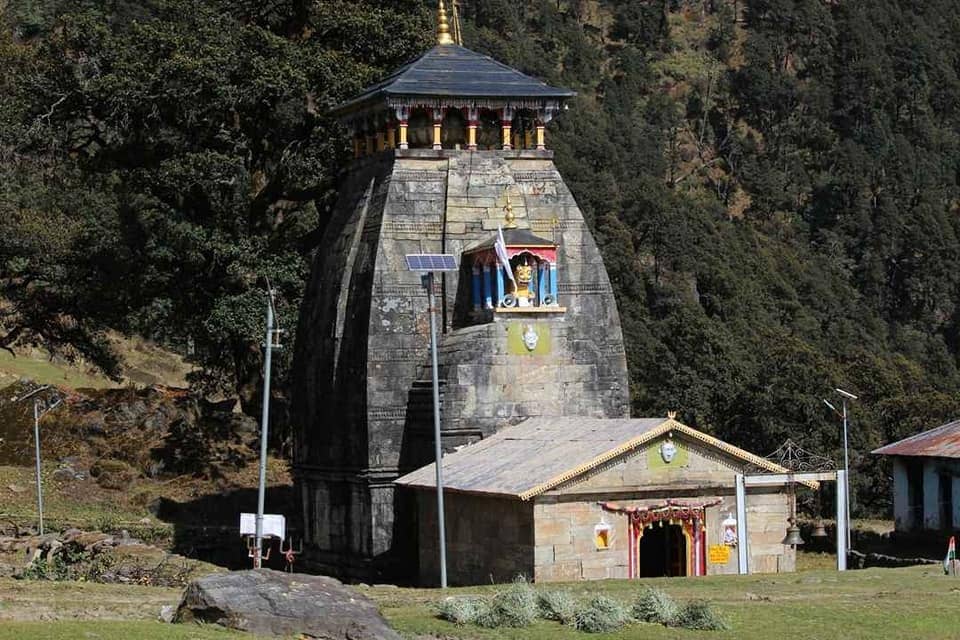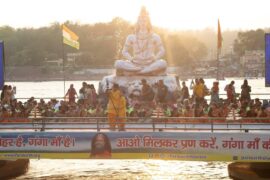Discover About Madmaheshwar Trekking Route, Travel Tips
The Madmaheshwar Mandir is also known as Madhyamaheshwar or Madmaheshwar trekking , is a unique journey that differs from typical mountain or meadow treks. While you do reach meadows at the end, the real highlight is the trail itself, which is followed by pilgrims visiting the Madhyamaheshwar Temple, one of the sacred “Panch Kedars.”
Overview: Madmaheshwar Trekking
This place is steeped in mythology, with a legend from the Mahabharata, one of Hinduism’s great epics. It is said that Bhima, the second Pandava, built the Madhyamaheshwar Temple to seek forgiveness for the Pandavas’ sins in the Kurukshetra war. The temple, dedicated to Lord Shiva, features a navel-shaped Lingam.
The Madmaheshear Trekking is located in the Kedarnath Wildlife Sanctuary in the northern Himalayas, a region known for its rich biodiversity and the endangered Himalayan Musk Deer. Hiking this trail offers many incredible sights and experiences.
Madmaheshwar Trek Distance
This Madmaheshear Trekking 32 km ( Madmaheshwar Trek Km ) can be done in over 3 days, takes you through charming villages, coniferous forests, and grasslands, with the Madhyamaheshwar Ganga river flowing below on the first day.

A highlight: Madmaheshear Trekking
of the trek is witnessing the first rays of sunlight hitting the Chaukhamba massif from Buda Madmaheshwar—a view that makes the entire journey worthwhile. However, the trek demands a good level of fitness, especially on the second day, where there’s a 5,000 ft ascent( Madmaheshwar Altitude ). Beginners can attempt it, but they need to be in good shape. Check the Fitness section below to prepare for the trek.
First Light on the Chaukhamba Massif
Typically, you need to climb to 14,000 feet or higher to see the first light of dawn on mountain peaks. But on the Madmaheshwar trek, which only reaches about 11,000 feet, you can witness the sun’s first rays illuminating the Chaukhamba range. It’s an awe-inspiring sight that you’ll wish you could capture forever!
Up-Close with the Chaukhamba Massif
Treks like Annapurna Base Camp and Goechala offer close views of mountain ranges after days of challenging hiking. In contrast, the Madmaheshwar trek brings you so close to the Chaukhamba massif that it feels as if you could reach out and touch it.
Madhyamaheshwar Temple
Trekkers cover over 32 kilometers to visit the sacred Madhyamaheshwar Temple, one of the Panch Kedars. It is the fourth temple in the series, visited after Kedarnath, Tungnath, and Rudranath, with Kalpeshwar being the final one. This ancient temple is believed to have been built by Bhima, the second Pandava.
Bird Watching Opportunities
The trek passes through the Kedarnath Wildlife Sanctuary, a diverse ecosystem where you might spot various species of birds. If you’re extremely lucky, you might even see the endangered Himalayan Musk Deer, protected in this sanctuary.
Madmaheshear Trekking Trail Information
The trek to Madmaheshwar Temple is mostly well-paved and does not require technical skills. Although the entire trail is 16 km long, it only becomes challenging from Chhoti Bantoli (Lower Bantoli) to the temple due to the continuous ascent.
-
Madmaheshwar trek starting point is Ransi village Uttarakhand
Madmaheshwar trek route is divided into three sections over three days:
Day 1: Ransi to Lower Bantoli
-
- Madmaheshear Trekking Distance: 7.5 km
- Madmaheshear Trekking Duration: 2.5 hours
- Altitude Gain: 745 feet
- Start the trek from Ransi, the last motorable point, on a downhill trail along the Madhyamaheshwar Ganga river until you reach Lower Bantoli. The scenery along this easy stretch is stunning.
Day 2: Lower Bantoli to Madhyamaheshwar Temple
-
- This section involves a more challenging ascent as you head towards the temple.
Day 3: Madhyamaheshwar Temple to Buda Madmaheshwar and back to Ransi
-
- The final day includes a visit to Buda Madmaheshwar before returning to Ransi.
Madmaheshwar Trek Guide ( Madmaheshwar Trek Itinerary )
Day 1: Ransi to Lower Bantoli
- Madmaheshear Trekking Distance: 10.5 km
- Trek Duration: 5 hours
- Altitude Gain: Approx. 3,350 feet
- GPS Coordinates of Ransi: 30°32’12.41″N 79°12’6.61″E
- GPS Coordinates of Lower Bantoli: 30°35’48.64″N 79°10’48.19″E
Highlights:
- Rich flora including wildflowers like Cosmos Bipinnatus (Mexican Aster).
- Trek through lush forests with occasional views of the gushing river.
- Arrive at Lower Bantoli to stay in basic lodges for around Rs. 500 per night.
Local Insight:
- Enjoy the natural beauty and observe the local flora and fauna.
- Local lodges offer healthy food and essential amenities.
Day 2: Lower Bantoli to Madhyamaheshwar Temple
- Trek Distance: 6.5 km
- Trek Duration: 4 hours
- Altitude Gain: Approx. 4,948 feet
- GPS Coordinates of Lower Bantoli: 30°36’25.22″N 79°11’17.96″E
- GPS Coordinates of Madhyamaheshwar Temple: 30°38’6.68″N 79°13’18.07″E
Highlights:
- The trek involves a steep ascent with breathtaking views.
- Experience diverse landscapes, including rocky terrains and lush pine forests.
- Beautiful waterfalls and scenic spots along the way.
- The Madhyamaheshwar Temple complex offers simple accommodation and meals.
Tips:
- Trekking poles are highly recommended to ease the climb and protect your knees.
- The path is challenging but rewards with stunning scenery.
Day 3: Madhyamaheshwar Temple to Buda Madmaheshwar
- Trek Distance: 2 km
- Trek Duration: 1 hour
- Altitude Gain and Loss: Approx. 875 feet
- GPS Coordinates of Madhyamaheshwar Temple: 30°38’6.68″N 79°13’18.07″E
- GPS Coordinates of Buda Madmaheshwar: 30°38’1.25″N 79°12’50.83″E
Highlights:
- Early morning trek to witness the sunrise over the Chaukhamba massif.
- The view from Buda Madmaheshwar is considered the highlight of the trek.
- Reflection of the Chaukhamba massif in the Buda Madmaheshwar pond.
Tips:
- Start the Madmaheshear Trekking Guide Trek Route, Travel Tips
early to reach Buda Madmaheshwar by sunrise. - Spend time enjoying the serene surroundings and the breathtaking sunrise views.
Best Time to Visit
- Post-Monsoon (September – October): Clear views of Chaukhamba massif and pleasant weather.
- Spring and Summer (March – June): Witness snow on the trail and enjoy rhododendrons.
- Avoid Winter: High snowfall can block trails and make trekking difficult.
How to Reach for Madmaheshear Trekking ( How to reach Madhyamaheshwar )
By Air: Fly to Dehradun and take a bus or taxi to Rishikesh.
-
- Prepaid taxi from Jolly Grant Airport to Rishikesh: Rs. 800 – Rs. 1,000.
- Auto-rickshaws outside the airport terminal: Approx. Rs. 300.
By Train: Travel to Haridwar or Dehradun by train from New Delhi.
-
- Recommended trains: Nanda Devi Express, Jan Shatabdi Express.
By Bus: Buses from Delhi to Rishikesh are frequent and cost-effective.
Additional Notes:
- Carry essentials like a water bottle and snacks.
- If camping, set up your tent before dark.
- Check the weather conditions if trekking in March for snow.
Enjoy yourMadmaheshear Trekking and the mesmerizing beauty of Uttarakhand’s landscapes!
FAQ
- madmaheshwar to kalpeshwar trek
- madmaheshwar trek cost
- how to reach madmaheshwar
- madmaheshwar trek time
- madmaheshwar trek difficulty
- where is madmaheshwar temple Madmaheshwar Trekking
- how to reach madhmaheshwar Madmaheshwar Trekking
- how to reach madmaheshwar temple Madmaheshwar Trekking
- madmaheshwar trekking latest information Madmaheshwar Trekking
- madmaheshwar trek guide Madmaheshwar Trekking
- where is madhyamaheshwar temple Madmaheshwar Trekking
- madmaheshwar trek package Madmaheshwar Trekking
- trek to madmaheshwar Madmaheshwar Trekking
- madmaheshwar trek blog Madmaheshwar Trekking




Comments are closed.